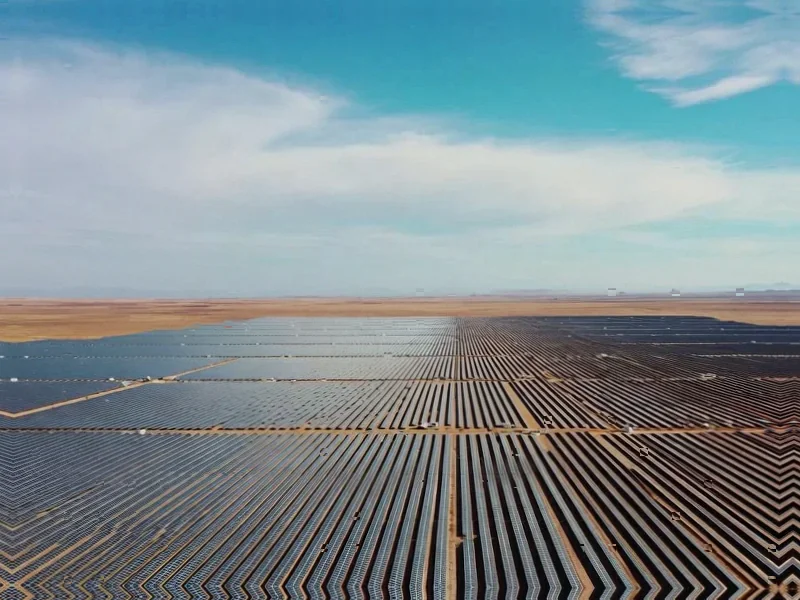According to DCD, Meta has signed two Power Purchase Agreements with Treaty Oak Clean Energy for solar projects in Louisiana with combined capacity of 385MW. The Beekman Solar project in Morehouse Parish will deliver 185MWac, while the Hollis Creek Solar project in Sabine Parish will provide 200MWac, with both expected to reach commercial operations in Q3 2027. Meta will purchase the environmental attributes while the energy feeds into the local grid, supporting the company’s 2GW data center campus development in Richland Parish. This represents Meta’s second PPA in Louisiana, following last year’s agreement with RWE for its 100MWac Lafitte Solar project. This mixed energy approach reveals the complex reality of powering AI infrastructure.
Table of Contents
The AI Energy Paradox
Meta’s dual-track energy strategy highlights a fundamental challenge facing technology companies pursuing artificial intelligence ambitions. AI model training and inference require massive, consistent power that renewable sources alone cannot reliably provide at scale. The intermittent nature of solar power means these PPAs primarily serve environmental accounting purposes rather than directly powering the data centers. This creates an energy paradox where companies can claim renewable energy usage while their critical operations depend on fossil fuels. The reality is that until grid-scale storage technology matures significantly, energy-intensive computing will require backup from dispatchable power sources.
Louisiana’s Energy Transformation
The choice of Louisiana for this development represents a strategic shift in data center geography. Traditionally concentrated in Virginia and other established markets, data center operators are now exploring regions with different energy profiles and regulatory environments. Louisiana’s energy infrastructure, historically dominated by oil and gas, is undergoing a gradual transformation as renewable energy projects gain traction. However, the state’s existing natural gas infrastructure makes it an attractive location for companies needing reliable power. The partnership with local utility Entergy, which is building 2,260MW of new gas-fired generation specifically for Meta’s campus, demonstrates how traditional energy providers are adapting to serve tech industry demands.
Regulatory and Community Implications
This development raises important questions about grid management and community impact in Louisiana. The concentration of 2GW of data center load in a single location represents a significant portion of the state’s electricity demand. While Meta’s solar investments help offset some environmental concerns, the net addition of fossil fuel generation capacity could have long-term implications for Louisiana’s carbon footprint and electricity rates. Local communities may benefit from economic development and job creation, but must also contend with increased strain on water resources for cooling and potential impacts on local electricity reliability and pricing for other consumers.
Industry Trends and Competitive Landscape
Meta’s approach reflects broader industry trends where technology companies are becoming major energy market participants. Similar to how Treaty Oak Clean Energy and other independent power producers have emerged to serve corporate renewable demand, we’re seeing traditional energy companies adapt their business models. The $27 billion joint venture with Blue Owl Capital demonstrates how complex the financing has become for these massive infrastructure projects. Other tech giants are pursuing similar mixed strategies, balancing renewable energy commitments with the practical realities of powering compute-intensive AI workloads that cannot tolerate interruptions.
Future Outlook and Challenges
The success of this energy strategy depends on several factors beyond Meta’s control. Regulatory approval for the new gas generation remains pending, and community opposition could emerge as the scale of fossil fuel infrastructure becomes apparent. The timing mismatch between solar project completion in 2027 and gas plant operation in 2028-2029 creates a potential gap in the company’s energy strategy. Additionally, as AI workloads continue growing exponentially, even this massive investment may prove insufficient, requiring further expansion of both renewable and conventional generation. The true test will be whether Meta can maintain its environmental commitments while scaling AI infrastructure that fundamentally challenges grid sustainability.



